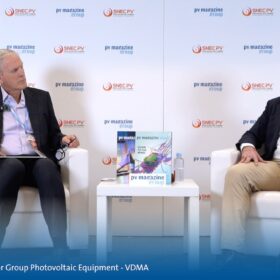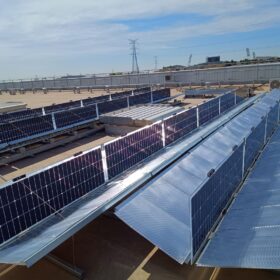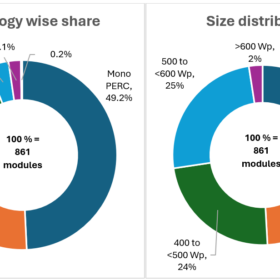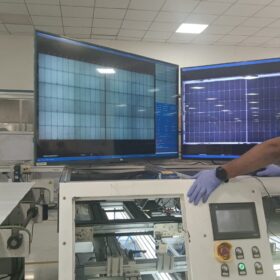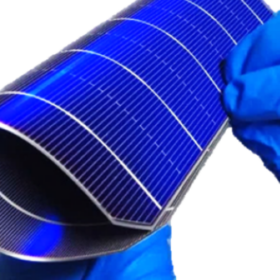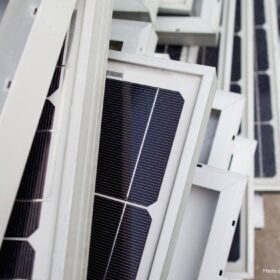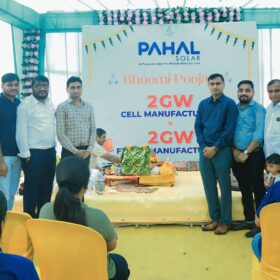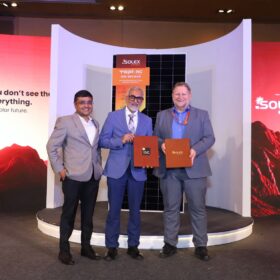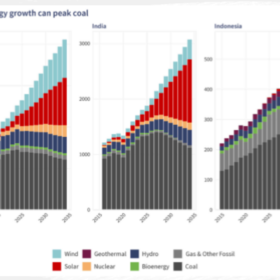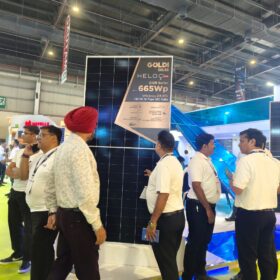VDMA expects copper metallization to take off in next 2 years
At SNEC 2024 in Shanghai, pv magazine spoke with Puzant Baliozian, lead consultant of sector group photovoltaic equipment for Germany’s Machinery and Equipment Manufacturers Association (VDMA). He says tunnel oxide passivated contact (TOPCon) technology will dominate the solar market in the next 10 years and expects module manufacturers will compete to develop more creative product designs. He also believes that copper metallization will gain market share in heterojunction (HJT) module production in the next years. “In the upcoming decade, we will have less than mg/W of silver being used for both TOPCon and HJT technologies,” he stated.
Spanish startup offers pre-assembled vertical rooftop PV systems equipped with reflectors
FutureVoltaics says it has developed pre-assembled, reflector-based vertical rooftop PV systems. The systems feature 175 W heterojunction bifacial solar modules and special reflectors on both sides.
72% of solar PV modules enlisted in the latest ALMM list are of high-efficiency technologies
Out of the 861 solar PV modules currently enlisted in ALMM, the majority (around 72%) are from high-efficiency technologies. With a 49% share, mono PERC is the most dominant module type in ALMM. Encouragingly, emerging PV module technologies such as n-type TOPCon, Bifacial n-type TOPCon, and Bifacial Mono PERC also account for a significant share of around 22.5%.
The future of solar energy: How R&D can bridge the gap between supply and demand
Continued investments in research and development, particularly in areas like advanced battery storage technologies and next-generation solar cell materials, coupled with supportive policies and global collaboration can unlock the full potential of solar energy and pave the way towards a brighter, more sustainable future.
Longi releases wafers for TOPCon, heterojunction, back-contact cell tech
Chinese manufacturer Longi says that its new Tera wafers offer a notable efficiency boost of approximately 0.1% across various cell technologies.
India added 20.8 GW of solar module, 3.2 GW of cell manufacturing capacity in 2023, says Mercom
India’s cumulative solar module manufacturing capacity reached 64.5 GW and solar cell capacity 5.8 GW as of December 31, 2023.
TOPCon solar module production hits cells bottleneck
The Indian solar industry’s transition to TOPCon and HJT underscores the need for technological upgrades and increased investment in cell manufacturing capabilities.
Longi develops flexible heterojunction solar cell with 26.06% efficiency
The Chinese module manufacturer led an international research team seeking silicon material savings and efficiency gains in the development of heterojunction PV devices. The cell achieved a certified power conversion efficiency of 26.06% with a thickness of 57 μm, with Germany’s Institute for Solar Energy Research confirming the result.
US secondary market for PV modules offers low-cost buying opportunities
EnergyBin has reviewed pricing comparisons and trends in the US secondary market for solar panels.
Enel secures €560 million for 3 GW heterojunction panel factory in Italy
Enel has obtained €560 million ($610.2 million) for a solar module factory it is building in Catania, Sicily.
